Let’s face it: the journey of car ownership, while often exciting, can sometimes take an unexpected turn towards disappointment. Imagine spending tens of thousands of dollars, or committing to a multi-year car loan, only to develop a profound case of buyer’s remorse. Unfortunately, this scenario is far more common than many prospective car owners realize. Vehicle manufacturers, despite rolling out models that appear promising on paper or in showrooms, don’t always deliver on the hype, leaving drivers in a bind.
Considering the ever-climbing prices of both new and used cars these days, making an informed decision is more critical than ever. It’s simply not enough to base a significant buying choice solely on exterior aesthetics or a glance at the specification sheet. Such an approach can quickly lead to trouble, transforming an anticipated upgrade into a source of ongoing frustration and unexpected expenses. This is where the collective wisdom of other vehicle owners becomes an invaluable resource for navigating the complex automotive market.
Learning from the missteps and regrets of those who have gone before you is a highly effective way to make smarter, more confident choices when purchasing a vehicle. Not all cars live up to their reputation; some appear to be a great deal until you’re confronted with endless repairs and uncomfortable rides. By highlighting these specific models, we aim to provide practical, consumer-oriented information to help you avoid common pitfalls and ensure your next vehicle purchase is one you’ll genuinely be happy with for years to come. Here are five vehicles that owners frequently wish they had never purchased.
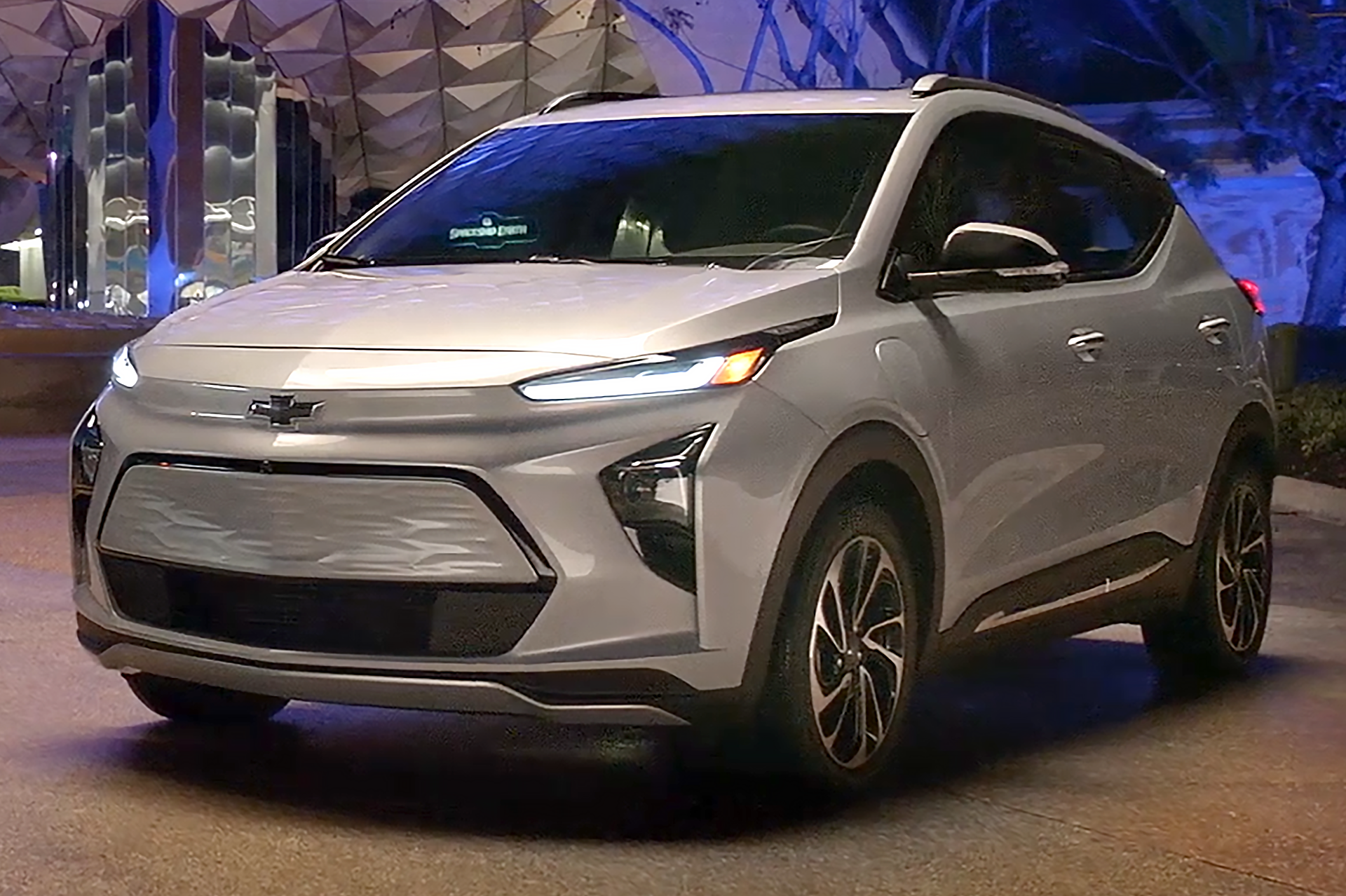
1. **Chevrolet Bolt**General Motors’ Chevrolet Bolt often garners initial praise for its appealing affordability and a respectable electric range, which makes it seem like a compelling option for those looking to enter the EV market. However, beneath this attractive surface, the vehicle is unfortunately plagued with a series of significant problems that have severely impacted owner satisfaction and its overall reputation. What begins as an exciting foray into electric driving can quickly become a source of considerable stress and costly interventions.
The most infamous and concerning issue associated with the Bolt is its propensity for battery-related fires. This critical safety flaw led to massive recalls initiated in both 2020 and 2021, shaking consumer confidence and raising serious questions about the vehicle’s long-term viability. The root cause of this dangerous problem stems from lithium-ion batteries, specifically those manufactured by LG, which possess a defect that could cause them to short-circuit, overheat, and, in severe cases, ignite into flames. For owners, this translates into not just a safety hazard but also a significant inconvenience and uncertainty.
Beyond the grave battery problems, the Chevrolet Bolt exhibits several other less-than-stellar attributes that contribute to buyer’s remorse. Owners frequently report that the ride quality is merely “so-so,” failing to provide the comfortable and smooth experience often expected from a modern vehicle. Furthermore, the space allocated for rear passengers is often described as limited, making longer journeys or carrying multiple adults a less-than-ideal proposition.
Adding to these concerns, the car’s handling characteristics are often deemed mediocre, failing to inspire confidence or provide an engaging driving experience. While affordability and range are important factors, these combined shortcomings, especially the critical battery fire risk and subsequent recalls, make the Chevrolet Bolt a vehicle many owners would gladly “unprocure” if given the chance. This highlights a clear disparity between initial appeal and the realities of long-term ownership.
Car Model Information: 2019 Chevrolet Bolt EV LT
Name: Chevrolet Bolt EV
Caption: 2022 Chevrolet Bolt EV
Manufacturer: General Motors
Production: unbulleted list
ModelYears: unbulleted list
Class: Subcompact car
BodyStyle: hatchback
Layout: Front-engine, front-wheel-drive layout
Predecessor: Chevrolet Spark EV
Categories: 2020s cars, All Wikipedia articles in need of updating, All articles containing potentially dated statements, All articles with unsourced statements, Articles containing potentially dated statements from February 2018
Summary: The Chevrolet Bolt EV (marketed in Europe as Opel Ampera-e) is a battery electric subcompact hatchback manufactured and marketed by General Motors under its Chevrolet brand from late 2016 until late 2023, with a brief hiatus between mid-2021 and early 2022.
The first-generation Bolt was developed and manufactured with LG Corporation. Sales of the 2017 Bolt began in California in December 2016; it was released nationwide and international markets release in 2017. A rebadged European variant was marketed as the Opel Ampera-e in mainland Europe. In 2017, the Bolt was the second-best-selling plug-in car in the United States. It was named the 2017 Motor Trend Car of the Year, the 2017 North American Car of the Year, an Automobile magazine 2017 All Star, and was listed in Time magazine’s Best 25 Inventions of 2016. The Ampera-e was discontinued after 2018. By the end of 2020, GM had sold 112,000 Bolt and Ampera-e cars worldwide. The first-generation Bolt had been subject to at least three recalls due to battery fire risks.
In mid-2023, GM officials said they would discontinue the Bolt; after outcry, they announced plans for a next-generation model, which is expected to be revealed in 2025 for model year 2026.
Get more information about: Chevrolet Bolt
Buying a high-performing used car >>>
Brand: Chevrolet Model: Bolt
Price: $12,999 Mileage: 64,980 mi.
Read more about: 12 Cars That Made Drivers Say ‘Nope, Not Again!’ – Your Ultimate Guide to Avoiding Instant Regret on Wheels
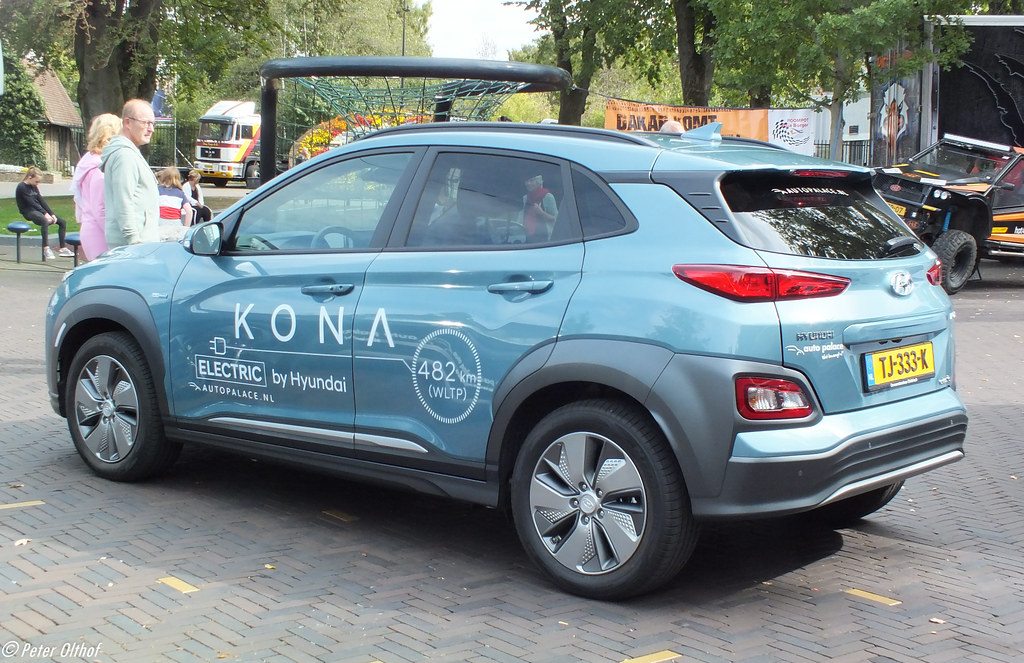
2. **Hyundai Kona Electric**Hydraulic has been on a strong trajectory in recent years, rolling out a number of intriguing and generally well-received electric vehicles that have captured attention in the burgeoning EV market. However, even successful manufacturers can have a few “clunkers” in their lineup, and the Hyundai Kona Electric unfortunately stands out as a prime example of a model that has not lived up to expectations. Despite the brand’s broader success, this particular EV has accumulated a history of issues that cast a shadow over its ownership experience.
A significant part of the Kona Electric’s history, much like the Chevrolet Bolt, includes battery fires and subsequent recalls. This serious safety defect prompted the carmaker to issue a worldwide recall in both 2020 and 2021, with the critical objective of mitigating the fire risks by replacing faulty battery packs in all affected EVs. While such proactive measures are necessary for safety, the very existence of these widespread and critical battery issues undeniably undermines consumer trust and creates a perception of unreliability around the vehicle.
However, the battery-related problems, while severe, are frequently described by owners as “just the tip of the iceberg” when it comes to the Kona Electric’s drawbacks. This strongly implies that there are other, perhaps less publicized but equally frustrating, issues that contribute to the overall dissatisfaction among owners. The context, unfortunately, doesn’t explicitly detail these additional problems, leaving potential buyers to rely on the general warning: “Buyer beware!”
This broad caution signals that despite its potential as an affordable electric vehicle, the Hyundai Kona Electric demands thorough investigation beyond its basic specifications. The documented history of battery recalls alone is a significant red flag, but the implication of further, unspecified issues suggests a more pervasive pattern of disappointment. For many, the risk and uncertainty associated with these problems make it a regrettable purchase, as the promised benefits of EV ownership are overshadowed by concerns about safety and reliability.
Car Model Information: 2020 Hyundai KONA Ultimate
Name: Hyundai Kona
Caption: Hyundai Kona N Line (SX2)
Manufacturer: Hyundai Motor Company
Aka: Hyundai Kauai (Portugal)
Production: 2017–present
ModelYears: 2018–present
Class: Subcompact crossover SUV
BodyStyle: SUV
Layout: ubl
Categories: 2020s cars, All-wheel-drive vehicles, All Wikipedia articles in need of updating, Articles containing Chinese-language text, Articles containing Korean-language text
Summary: The Hyundai Kona (Korean: 현대 코나) is a subcompact crossover SUV produced by the South Korean manufacturer Hyundai. The first-generation Kona debuted in June 2017 and the production version was revealed later that year. It is positioned between the Venue or Bayon and the Tucson in Hyundai crossover SUV line-up. The battery electric version called the Kona Electric (or Kona EV) was first launched in South Korea during the first half of 2018 and rolled out gradually worldwide afterwards.
Get more information about: Hyundai Kona
Buying a high-performing used car >>>
Brand: Hyundai Model: Kona
Price: $19,486 Mileage: 51,542 mi.
Read more about: 12 Cars That Made Drivers Say ‘Nope, Not Again!’ – Your Ultimate Guide to Avoiding Instant Regret on Wheels
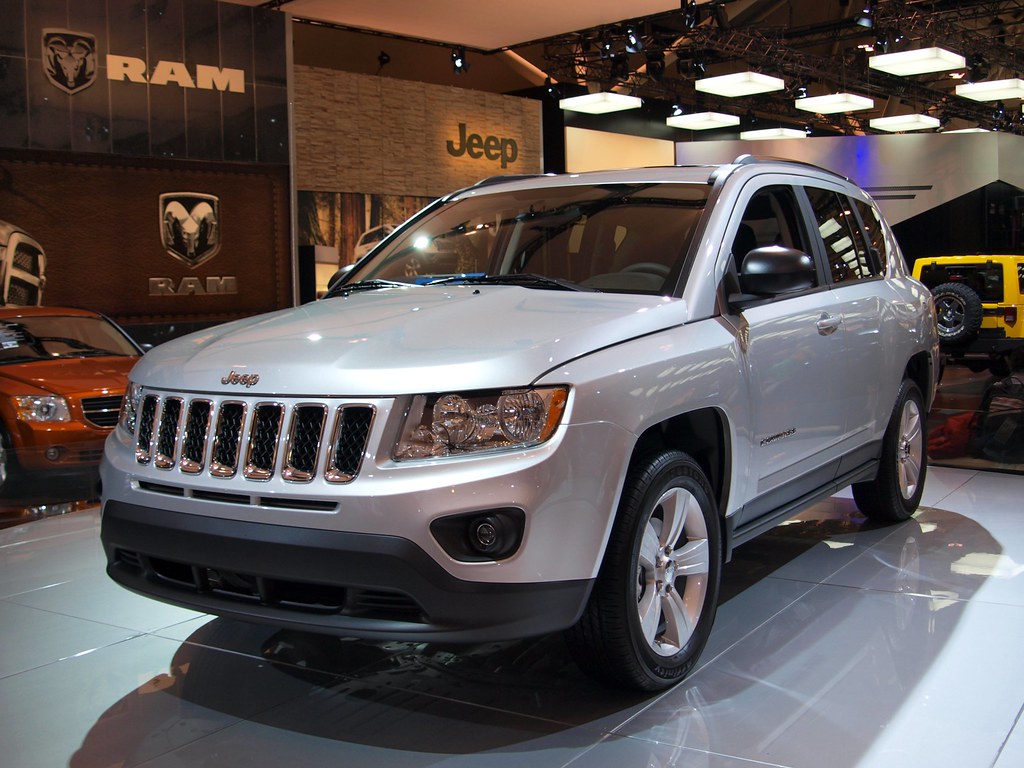
3. **Jeep Compass**The Jeep Compass, a compact SUV, has unfortunately garnered a reputation for presenting some serious issues across various model years, making it a vehicle many owners wish they had bypassed. Far from being the reliable adventure companion its brand lineage might suggest, this particular model has instead become synonymous with a range of mechanical and comfort-related headaches. For potential buyers, it stands as a strong recommendation to “steer clear” if the goal is to avoid a “migraine headache on wheels.”
One of the most frequently cited and vexing problems owners complain about involves the vehicle’s transmission. Both the continuously variable transmission (CVT) and the 9-speed automatic transmissions commonly experience “herky-jerky shifting” – a jarring and unpleasant sensation during acceleration and deceleration. Worse still, these transmissions have a known tendency for “catastrophic failure,” leading to extremely costly repairs and significant downtime, which is a major concern for any vehicle owner.
Beyond the transmission woes, the Jeep Compass struggles with other fundamental aspects of vehicle performance and reliability. Owners report pervasive issues such as “poor engine performance,” which can make daily driving feel sluggish and underpowered. There are also recurring complaints about “excessive oil consumption,” a problem that indicates deeper engine issues and can lead to higher maintenance costs and constant monitoring. Furthermore, problems with the “electrical system” add another layer of frustration, often manifesting as unpredictable malfunctions in various components.
Older models of the Compass specifically faced criticisms regarding basic comfort and visibility. Issues included discomfort with the “driver seat,” poor “indicator visibility,” and an overall lower level of comfort compared to competitors. Moreover, some owners lament its “so little horsepower it’s tough to think of this as a real Jeep,” suggesting it fails to embody the rugged capability expected of the brand. Collectively, these numerous and varied problems make the Jeep Compass a vehicle many drivers would gladly “unprocure” given a second chance.
Car Model Information: 2022 Jeep Gladiator Sport
Name: Jeep Compass
Caption: 2019 Jeep Compass
Manufacturer: Jeep
Production: 2006–present
ModelYears: 2007–present
Class: Compact crossover SUV
BodyStyle: SUV
Layout: Front-engine, front-wheel-drive layout
Chassis: Unibody
Categories: 2010s cars, 2020s cars, All-wheel-drive vehicles, All Wikipedia articles written in American English, Articles with short description
Summary: The Jeep Compass is a compact crossover SUV, introduced in 2006 for the 2007 model year. The first generation Compass and Patriot, its rebadged variant, were among Jeep’s first crossover SUVs. The second-generation Compass debuted in September 2016 in Brazil and at the Los Angeles International Auto Show in November 2016, sharing a modified platform with the Renegade. It is positioned between the smaller Renegade and the larger Cherokee globally or the Commander in South America. The third-generation Compass debuted in May 2025, built on the STLA Medium by Stellantis, shared with other PSA Groupe vehicles.
Get more information about: Jeep Compass
Buying a high-performing used car >>>
Brand: Jeep Model: Compass
Price: $29,962 Mileage: 23,063 mi.
Read more about: 12 Cars That Made Drivers Say ‘Nope, Not Again!’ – Your Ultimate Guide to Avoiding Instant Regret on Wheels
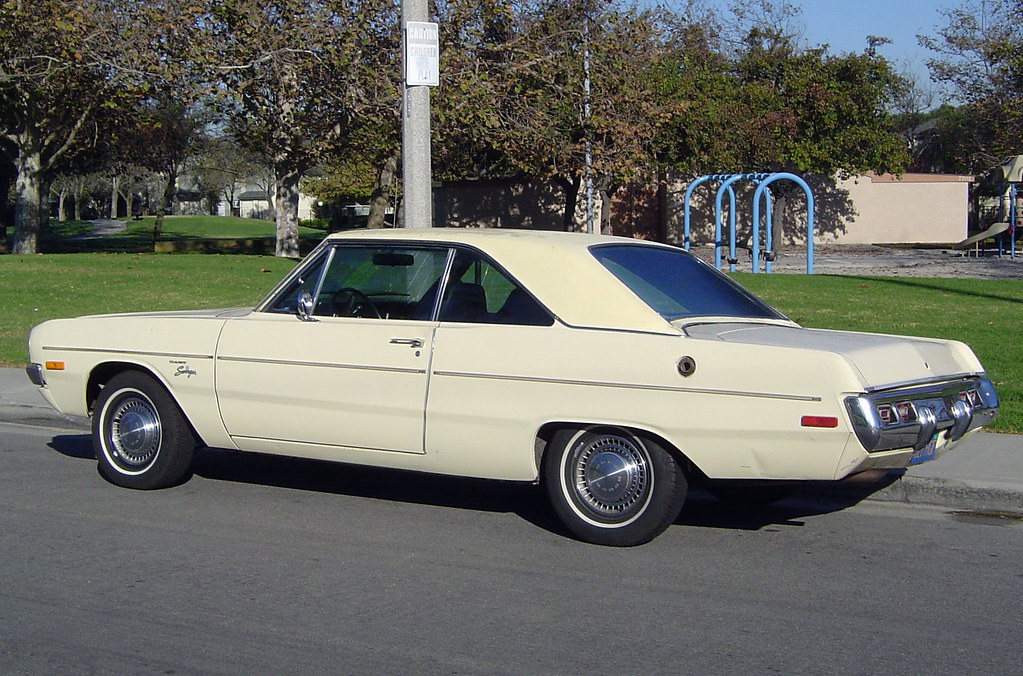
4. **Dodge Dart**The Dodge Dart, marketed as a compact sedan, unfortunately comes with what many owners describe as “full-size car problems,” indicating a disproportionate number of issues relative to its class. This vehicle has proven to be a consistent source of buyer’s remorse, with a broad spectrum of complaints spanning virtually every major system. It’s a car where the question isn’t just ‘what went wrong?’ but ‘where do we even begin?’ to enumerate its shortcomings.
Owners report widespread dissatisfaction with nearly every critical component, from the “transmission to the engine and from the suspension to the brakes.” This holistic failure across multiple systems suggests fundamental design or manufacturing flaws that make the ownership experience consistently frustrating. When a vehicle suffers from such comprehensive issues, it transforms from a means of transport into a constant drain on time and finances, leaving drivers deeply regretting their purchase.
The depth of owner dissatisfaction with the Dodge Dart is starkly reflected in consumer surveys. According to insights from Consumer Reports, a troubling statistic reveals that “around six in 10 buyers say they are not satisfied with the vehicle.” This high percentage of regret underscores just how poorly the Dart delivered on its promises and how many owners found themselves stuck with a car they wished they had never bought. Such a significant lack of satisfaction is a powerful warning sign for prospective buyers.
Further contributing to the vehicle’s poor reception are specific complaints regarding its driving dynamics and interior features. Owners often cite “sluggish acceleration,” making merging onto highways or performing overtakes a nerve-wracking experience. Many also found “difficulty in finding a comfortable seated position,” which detracts from daily drivability. Moreover, a “poor AC system” is a particularly frustrating issue, especially in warmer climates, making the cabin uncomfortable and further diminishing the driving experience. Even its “name sounds odd” to some, reflecting a general lack of appeal beyond its mechanical woes.
Car Model Information: 1972 Dodge Dart Swinger
Name: Dodge Dart
Caption: 1966 Dodge Dart GT 2-door hardtop
Manufacturer: Dodge
Production: 1959–1976 (US market)
ModelYears: 1960–1976 (US market)
Class: Full-size
Layout: FR layout
Predecessor: Dodge Coronet#Fourth generation (1957–1959)
Related: Plymouth Valiant,Chrysler Valiant,Dodge Phoenix
Successor: Dodge Aspen,Dodge Diplomat,Talbot Tagora
Categories: 1970s cars, All articles with unsourced statements, Articles with short description, Articles with unsourced statements from December 2023, Articles with unsourced statements from May 2025
Summary: The Dodge Dart is a line of passenger cars produced by Dodge from the 1959 to 1976 model years in North America, with production extended to later years in various other markets.
The production Dodge Dart was introduced as a lower-priced full-size model in 1960 and 1961, but became a mid-size car for one model year for 1962, and was then reduced to a compact for two generations, from 1963 to 1976.
Chrysler had first used ‘Dart’ name plates on two Italian styled show cars, in 1956 and 1957, before it became a Dodge model name. The Dart nameplate was resurrected for a Fiat-derived compact car that was introduced in 2012.
Get more information about: Dodge Dart
Buying a high-performing used car >>>
Brand: Dodge Model: Dart
Price: $18,250 Mileage: 40,424 mi.
Read more about: 12 Cars That Made Drivers Say ‘Nope, Not Again!’ – Your Ultimate Guide to Avoiding Instant Regret on Wheels

5. **Dodge Grand Caravan**The Dodge Grand Caravan holds a unique place in many families’ memories, serving as the quintessential family, pet, and ‘thing’ hauler for generations. While some memories might be fond, the driving experience itself with these minivans is often described as “anything but smooth driving.” This discrepancy between sentimental value and practical performance often leads to significant buyer’s remorse, as the vehicle struggles to deliver reliable, stress-free transportation.
The most pervasive and critical complaint from owners centers around the Grand Caravan’s “transmission failure.” This is not just a rare occurrence but a “common complaint,” making it incredibly difficult to rely on the vehicle for its primary purpose. A family vehicle, above all, needs to be dependable, and frequent transmission issues fundamentally undermine this necessity, leaving families stranded or facing unexpected repair bills at the worst possible times.
Before outright failure, the transmissions often exhibit a range of problematic symptoms that signal their impending demise. Owners frequently report “delayed gear engagement,” which can make acceleration feel hesitant and unpredictable. “Rough shifting” is another common experience, creating an uncomfortable and unsettling ride. Furthermore, issues like “slipping” gears are indicative of a transmission struggling to maintain proper function, all of which contribute to an unreliable and unenjoyable driving experience for the driver and passengers alike.
Beyond the transmission, the Grand Caravan is also plagued by other persistent issues. Many owners frequently complain about “electrical system problems,” which can manifest in various frustrating ways, from power windows failing to more critical component malfunctions. “Heavy oil consumption” is another recurring issue, indicating potential engine wear or design flaws that require constant monitoring and can lead to increased maintenance costs. Coupled with “uncomfortable second-row seats,” a “horrible sound system,” and “cheap upholstery” that doesn’t hold up, it’s clear why many owners, faced with these myriad frustrations, would gladly “rewind time and have a do-over,” opting for a different vehicle choice.”
Car Model Information: 2023 Honda Civic Sport
Caption: 2011 Dodge Grand Caravan Mainstreet
Name: Dodge Grand Caravan
Manufacturer: Chrysler Corporation,Daimler AG,Chrysler LLC,Chrysler Group LLC,FCA US LLC
Class: Minivan
Layout: FF layout,F4 layout
Production: November 2, 1983 –August 21, 2020
ModelYears: 1984–2020
Related: Plymouth Voyager,Chrysler Town & Country (minivan),Dodge Mini Ram,Chrysler Voyager,Volkswagen Routan
Assembly: Windsor, Ontario,Fenton, Missouri,Fenton, Missouri,Fuzhou
Successor: Dodge Journey,Chrysler Voyager
Categories: All-wheel-drive vehicles, All articles with unsourced statements, Articles with short description, Articles with unsourced statements from December 2017, Articles with unsourced statements from May 2009
Summary: The Dodge Caravan is a series of minivans manufactured by Chrysler from the 1984 through 2020 model years. The Dodge version of the Chrysler minivans, was marketed as both a passenger van and a cargo van (the only version of the model line offered in the latter configuration). For 1987, the model line was joined by the long-wheelbase Dodge Grand Caravan. Produced in five generations across 36 model years, the Dodge Caravan is the second longest-lived Dodge nameplate (exceeded only by the Dodge Charger). Initially marketed as the Dodge counterpart of the Plymouth Voyager, the Caravan was later slotted between the Voyager and the Chrysler Town & Country. Following the demise of Plymouth, the model line became the lowest-price Chrysler minivan, ultimately slotted below the Chrysler Pacifica.
Sold primarily in the United States and Canada, the Dodge Caravan was also marketed in Europe and other international markets under the Chrysler brand (as the Chrysler Voyager or Chrysler Caravan). From 2008 onward, Dodge marketed the model line only as the Grand Caravan; Ram Trucks sold a cargo-only version of the model line as the Ram C/V Tradesman. The model line was also rebranded as the Volkswagen Routan from 2009 through 2014.
After the 2020 model year, the Dodge Grand Caravan was discontinued, ending production on August 21, 2020. For 2021 production, the Grand Caravan nameplate was moved to Chrysler, which used it for a Canadian-market version of the Chrysler Pacifica (in the United States, the exact vehicle was marketed as the Chrysler Voyager).
For its entire production run, the Dodge Caravan/Grand Caravan was manufactured by Chrysler Canada (now Stellantis Canada) at its Windsor Assembly facility (Windsor, Ontario). From 1987 until 2007, the model line was also manufactured by Chrysler at its Saint Louis Assembly facility (Fenton, Missouri). Since their introduction in late 1983, over 14.6 million Chrysler minivans have been sold worldwide (including export versions and versions sold through rebranding).
Get more information about: Dodge Caravan
Buying a high-performing used car >>>
Brand: Dodge Model: Grand Caravan
Price: $27,589 Mileage: 27,524 mi.
Read more about: 12 Cars That Made Drivers Say ‘Nope, Not Again!’ – Your Ultimate Guide to Avoiding Instant Regret on Wheels

6. **Nissan Sentra**For many prospective car buyers, the Nissan Sentra often appears as a sensible, affordable, and practical choice within the compact sedan segment. However, a closer look at owner feedback and reliability reports reveals that certain model years, particularly those manufactured between 2013 and 2019, have proven to be anything but. Instead of being a reliable daily driver, these Sentras have frequently left owners with a profound sense of regret, marking a clear deviation from the dependable image the brand often projects.
At the heart of the Sentra’s issues during this period lies its continuously variable transmission (CVT). This particular transmission, intended to provide smooth, efficient power delivery, instead became a notorious source of frustration for many owners. Common complaints included the CVT overheating, leading to a significant reduction in performance, and exhibiting “jerky acceleration” and “shuddering” sensations that made for an uncomfortable and unreliable driving experience. Such widespread transmission problems often necessitated costly repairs or even full replacements, severely impacting the vehicle’s long-term value and owner satisfaction.
Beyond the persistent CVT woes, these problematic Sentra models were also associated with a variety of other critical mechanical and safety concerns. Owners reported incidents of “engine stalling,” a terrifying prospect that compromises safety and leaves drivers stranded. Furthermore, the vehicle has been subject to numerous recalls spanning crucial safety components, including “airbags, seatbelts, brakes, and more.” These recalls, while necessary, further erode consumer confidence and indicate a pattern of manufacturing oversights that simply cannot be overlooked when considering a long-term purchase.
The combination of a notoriously unreliable transmission, concerning engine issues, and a history of safety-related recalls paints a clear picture of why the Nissan Sentra from these model years stands out as a car many motorists would readily “unprocure.” Its initial appeal, based on affordability and perceived practicality, quickly dissolves when faced with the realities of frequent breakdowns, expensive repairs, and a lingering sense of uncertainty about its reliability. For those seeking a truly dependable and low-maintenance vehicle, these specific Sentra iterations serve as a strong cautionary tale, underscoring the importance of thorough research before making a commitment.
Car Model Information: 2018 Nissan Sentra S
Name: Nissan Sentra
Caption: 2021 Nissan Sentra SR (B18; Canada)
Manufacturer: Nissan
Aka: Nissan Sunny
Production: 1982–present
Class: Subcompact car
Predecessor: Nissan Sunny#B310
Categories: 1990s cars, 2000s cars, 2010s cars, 2020s cars, All Wikipedia articles written in American English
Summary: The Nissan Sentra is a series of automobiles manufactured by the Japanese automaker Nissan since 1982. Since 1999, the Sentra has been categorized as a compact car, while previously it occupied the subcompact class. Until 2006, Sentra was a rebadged export version of the Japanese Nissan Sunny, but since the 2013 model year, Sentra is a rebadged export version of the Sylphy. The Sentra nameplate is not used in Japan. Many other countries in Latin America sell their versions of the Sunny as the Sentra. In Mexico, the first three generations of the Sentra were known as the Nissan Tsuru (Japanese for crane), and the B13 model was sold under that name until 2017, alongside the updated models badged as Sentra.
In North America, the Sentra currently serves as Nissan’s compact car, despite being rated as a mid-size car by the EPA due to its interior volume since the 2007 model year. While previous Sentras were subcompacts, the Sentra has grown over the years, with the Nissan Versa having replaced the Sentra in the entry-level area.
The Sentra name was created for Nissan by Ira Bachrach of NameLab, and Bachrach describes the origin as “Nissan wanted consumers to understand that it was quite safe even though it was small. The word Sentra sounds like central as well as sentry, which evokes images of safety.”
Get more information about: Nissan Sentra
Buying a high-performing used car >>>
Brand: Nissan Model: Sentra
Price: $10,650 Mileage: 78,361 mi.
Read more about: 12 Cars That Made Drivers Say ‘Nope, Not Again!’ – Your Ultimate Guide to Avoiding Instant Regret on Wheels
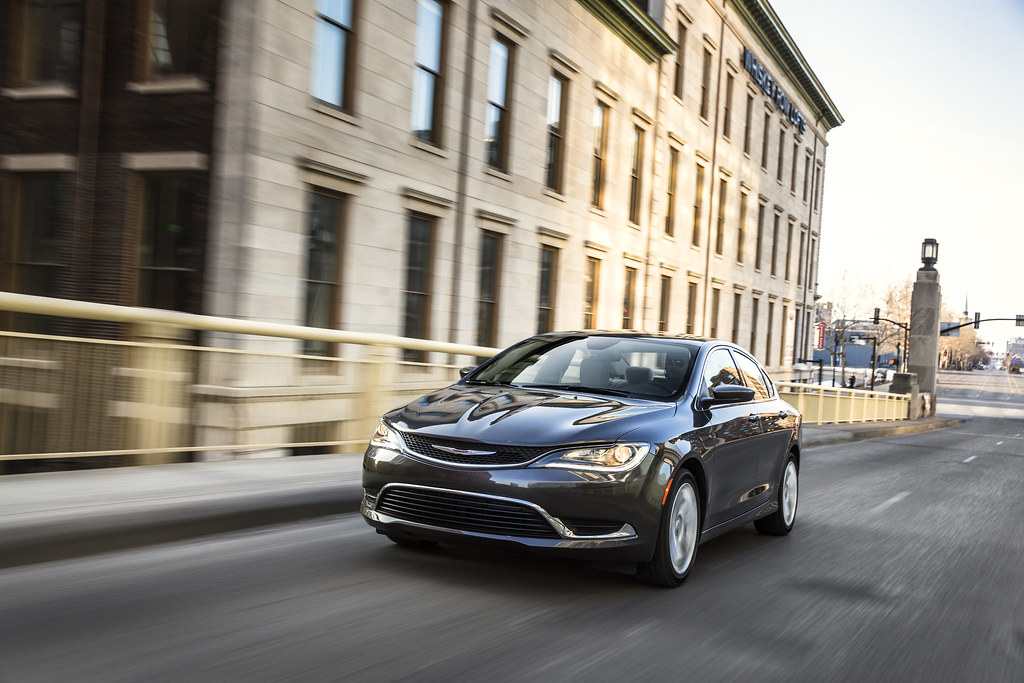
7. **Chrysler 200**The Chrysler 200, produced from 2011 to 2017, was positioned as a stylish mid-size sedan attempting to compete in a highly contested market. However, despite its efforts, the vehicle quickly developed a reputation for being a source of significant buyer’s remorse, particularly among owners of the 2015, 2016, and 2017 models. Its relatively short production run was unfortunately marked by a litany of reliability issues, making it a car that many drivers came to regret buying, often wishing for a chance at a different purchase altogether.
One of the most frequently cited problems with the Chrysler 200 revolved around its 9-speed automatic transmission. This advanced transmission, intended to enhance fuel economy and smoothness, proved to be “especially problematic.” Owners frequently encountered issues ranging from erratic shifting and delayed engagement to outright “transmission failure.” Such critical mechanical defects translate directly into expensive repair bills and significant downtime, transforming the ownership experience from one of convenience to one of constant frustration and financial strain.
Beyond the transmission troubles, the Chrysler 200 also suffered from fundamental performance and handling shortcomings. Many owners reported “engine performance problems,” which manifested as sluggish acceleration and a general lack of power, making the driving experience uninspiring and often frustrating, especially in situations requiring quick responsiveness. Furthermore, the vehicle’s “clumsy handling” made it feel less refined and agile than its competitors, contributing to an overall sense that the car felt “severely outdated” almost from the moment it left the lot.
The daily driving experience in a Chrysler 200 was further diminished by issues related to comfort and refinement. Owners often complained about “too much road noise,” which intruded on the cabin, making conversations difficult and long journeys tiresome. Coupled with a “rough ride” quality, these elements made the car less appealing for daily commutes or extended travel. Adding to this dissatisfaction, the cruise control system was frequently described as “less than reliable,” further detracting from the vehicle’s practicality and ease of use. Collectively, these pervasive issues highlight why the Chrysler 200 is widely considered a regrettable purchase by many of its former owners.
Car Model Information: 2015 Chrysler 200 S
Name: Chrysler 200
Manufacturer: Chrysler
Production: 2010–2016
ModelYears: 2011–2017
Assembly: Sterling Heights, Michigan
Class: Mid-size car
Sp: us
Predecessor: Chrysler Sebring
Categories: 2010s cars, All articles with dead external links, All articles with unsourced statements, Articles with dead external links from July 2020, Articles with permanently dead external links
Summary: The Chrysler 200 is a mid-size sedan that was manufactured and marketed by Chrysler from model years 2011 to 2017 across two generations in four-door sedan and two-door convertible (first generation only) body styles.
The 200 nameplate debuted on the 200C, a prototype hybrid vehicle shown at the 2009 North American International Auto Show in Detroit and based on the Chrysler 300. The 200C concept was engineered to accept either traditional gasoline, hybrid or full-electric powertrains.
Get more information about: Chrysler 200
Buying a high-performing used car >>>
Brand: Chrysler Model: 200
Price: $7,200 Mileage: 122,275 mi.
Read more about: Is Your Ride a ‘Menace’? Unpacking the 12 Cars That Scream ‘Terrible Driver Vibes’ on the Road!
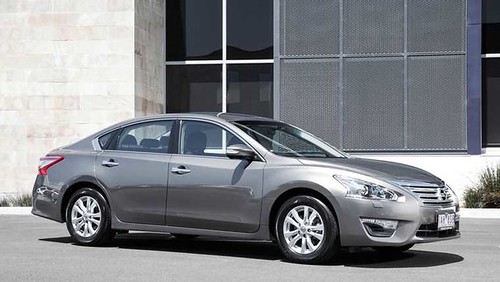
8. **Nissan Altima**The Nissan Altima, often a popular choice for its seemingly attractive blend of styling and features, has unfortunately become another car frequently listed by owners who wish they had opted for something else. Particularly the model years from 2013 to 2019 have proven to be a consistent source of buyer’s remorse, tarnishing the vehicle’s reputation and highlighting a significant gap between initial impressions and the realities of long-term ownership. The array of problems reported by drivers makes it clear why many consider this specific generation of the Altima to be a problematic investment.
Central to the Altima’s troubles during these years is, once again, the continuously variable transmission (CVT). Nissan’s heavy reliance on this transmission technology across several models has led to widespread criticism, and the Altima is no exception. Owners describe the CVT as a “problematic transmission,” citing issues with its reliability, performance, and overall durability. This includes “droning noise during acceleration” that many drivers find irritating, along with potential problems related to “steering, excessive oil consumption, and oil leaks” that underscore deeper mechanical vulnerabilities.
Beyond the fundamental powertrain concerns, the Nissan Altima also exhibited shortcomings in critical areas such as safety and basic comfort features. Its “braking performance has consistently underperformed in testing,” requiring longer stopping distances than many competitors, which is a serious safety concern. Moreover, owners frequently reported “sensor malfunctions” and “non-responsive ignitions,” adding layers of unreliability and potential safety risks. The “faulty AC system” is another particularly frustrating issue, especially in warmer climates, directly impacting passenger comfort and further diminishing the daily driving experience.
The interior experience also fell short of expectations for many, with the “infotainment system feeling dated and unresponsive compared to rivals.” This combination of crucial mechanical failures, significant safety concerns, and noticeable quality-of-life issues created an ownership experience fraught with frustration. For many, the Altima’s appeal was superficial, quickly giving way to a realization that its persistent problems made it an undesirable and regrettable purchase. It’s a prime example of how even a popular model can disappoint when core reliability and performance are compromised.
Car Model Information: 2020 Nissan Altima 2.5 SL
Name: Nissan Altima
Caption: 2024 Nissan Altima SR (L34; US)
Manufacturer: Nissan
Aka: Nissan Bluebird
Production: 1992–present
Class: Compact car
Predecessor: Nissan Bluebird,Nissan Stanza
ModelYears: 1993–present
Categories: 2000s cars, 2010s cars, 2020s cars, All-wheel-drive vehicles, All Wikipedia articles written in American English
Summary: The Nissan Altima is a mid-size car manufactured by Nissan since 1992. It is a continuation of the Nissan Bluebird line, which began in 1955.
The Altima has historically been larger, more powerful, and more luxurious than the Nissan Sentra but less so than the Nissan Maxima. The first through fourth-generation cars were manufactured exclusively in the United States and officially sold in North and South America, along with the Middle East and Australia. For other markets, Nissan sold a related mid-size sedan called the Nissan Teana which was between the Altima and Maxima in terms of size. In 2013, the Teana became a rebadged version of the fifth-generation Altima.
The name “Altima” was originally applied to a top trim line of the Nissan Leopard for the Japanese market in 1986, and then to the Nissan Laurel Altima mid-size car sold in Central America and the Caribbean before 1992. In 1992, Nissan discontinued the Stanza which was a Nissan Bluebird clone, replacing it with the US-built Altima, while remaining a compact car. The first Altima was produced in June 1992, as a 1993 model. All Altima models for the North American market were built in Smyrna, Tennessee, until June 2004, when Nissan’s Canton, Mississippi plant also began producing the model to meet high demand.
Get more information about: Nissan Altima
Buying a high-performing used car >>>
Brand: Nissan Model: Altima
Price: $15,990 Mileage: 93,989 mi.
Read more about: 12 Cars That Made Drivers Say ‘Nope, Not Again!’ – Your Ultimate Guide to Avoiding Instant Regret on Wheels
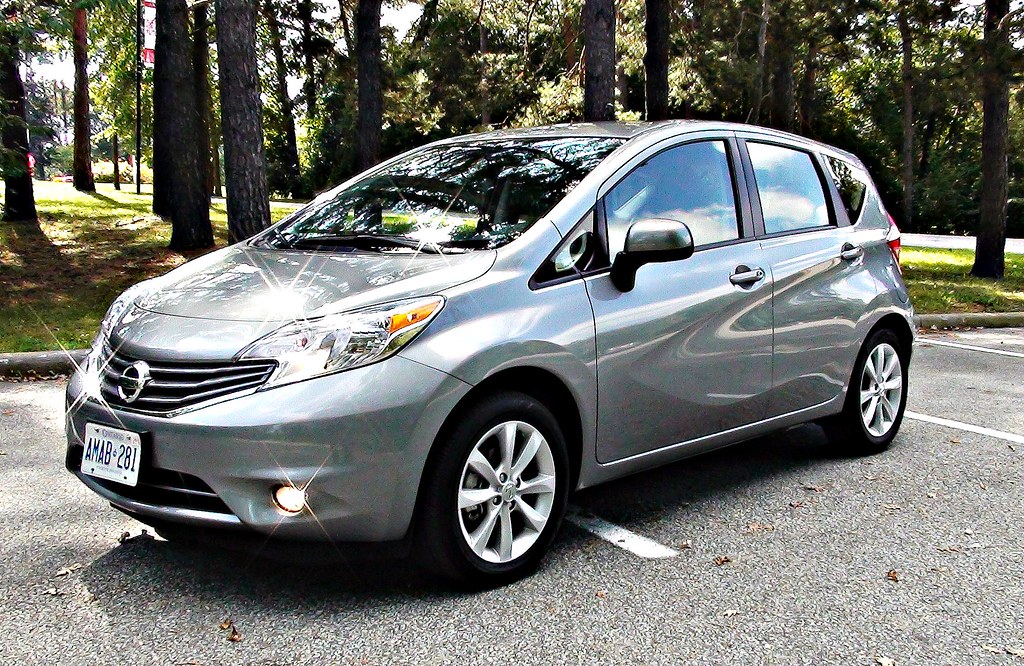
9. **Nissan Versa Note**When considering a budget-friendly hatchback, the Nissan Versa Note often catches the eye due to its “super-cheap” price tag. However, as the old adage goes, “you get what you pay for,” and with the Versa Note, that low price often mirrors a compromised quality level that frustrates owners to no end. What might initially seem like a smart economic choice quickly transforms into a source of regret for many drivers, as the vehicle fails to deliver on even basic expectations of comfort, performance, and long-term reliability.
A primary complaint among Nissan Versa Note owners centers on its transmission, another iteration of Nissan’s controversial continuously variable transmission (CVT). This CVT frequently left drivers feeling exasperated, with reports of sluggish responses and an overall unsatisfying driving dynamic. Compounding this, the “anemic acceleration from the 1.6-liter 4-cylinder engine” meant that merging onto highways or attempting overtakes could be a nerve-wracking and underpowered experience. This lack of enthusiastic performance makes the car feel inadequate for modern driving demands, despite its intended role as an economical city car.
The interior experience of the Versa Note further contributes to owner dissatisfaction. Many describe the car as “too small,” leading to cramped conditions for both passengers and cargo. The seats are frequently characterized as “uncomfortable,” making even short trips feel arduous, let alone longer journeys. Adding to the discomfort is the “horrible road noise” that permeates the cabin, creating an unrefined and tiring environment for occupants. These issues collectively detract significantly from the daily usability and enjoyment of the vehicle, challenging its practicality.
Ultimately, for many owners, the initial “reasonable price” of the Nissan Versa Note becomes a point of contention. After experiencing its numerous drawbacks—the frustrating transmission, underpowered engine, uncomfortable interior, and excessive road noise—the perceived value quickly diminishes. Many come to the conclusion that, despite its low entry cost, the vehicle’s persistent issues make its price feel “a bit too high” for the compromised ownership experience it delivers. It serves as a stark reminder that true value extends beyond the sticker price, encompassing comfort, performance, and long-term satisfaction.
Car Model Information: 2023 Honda Civic Sport
Categories: All set index articles, Articles with short description, CS1 Mexican Spanish-language sources (es-mx), CS1 Portuguese-language sources (pt), CS1 Spanish-language sources (es)
Summary: Nissan Versa is an automobile nameplate used by the Japanese manufacturer Nissan in the Americas for the following models:
According to a Nissan press release in 2008, “versa” is short for “versatile space” meant to imply the spaciousness of the interior and configurable cargo arrangements. The Versa is one of the few remaining subcompact cars left on sale in the North American market, with most automakers dropping small cars from their lineups to focus on crossovers and SUVs.
Get more information about: Nissan Versa
Buying a high-performing used car >>>
Brand: Nissan Model: Versa Note
Price: $27,589 Mileage: 27,524 mi.
Read more about: Is Your Ride a ‘Menace’? Unpacking the 12 Cars That Scream ‘Terrible Driver Vibes’ on the Road!
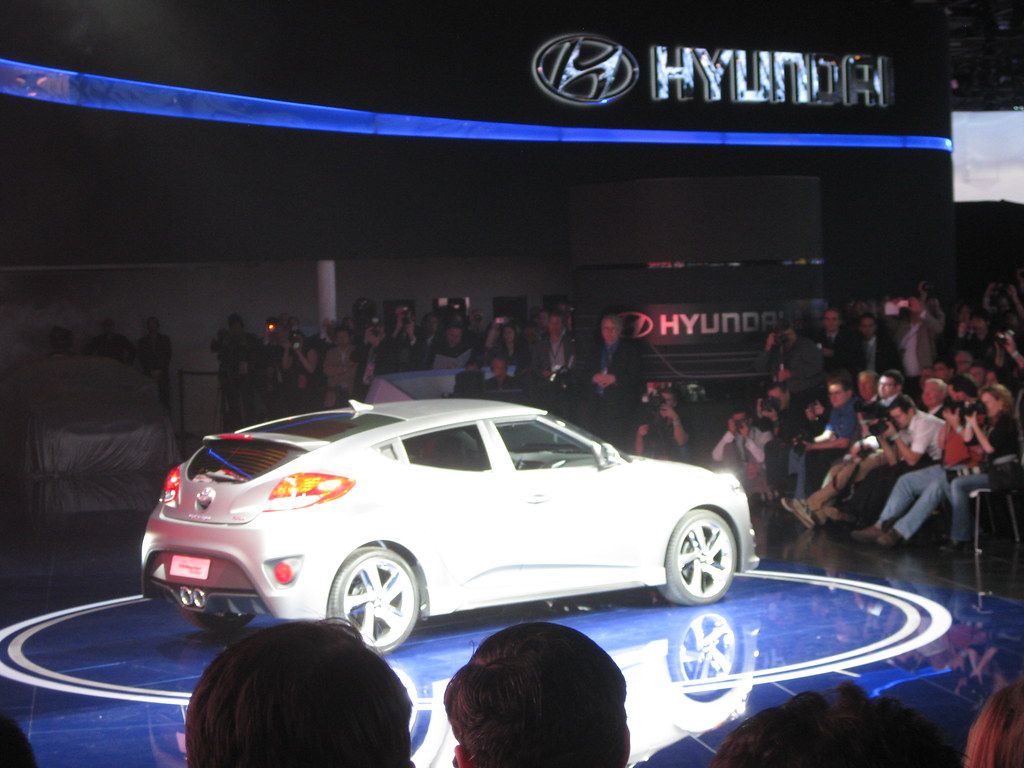
10. **Hyundai Veloster**The Hyundai Veloster presented itself as a unique and compelling option in the compact car segment, boasting a “cool-looking car with distinctive styling,” an intriguing “three-door” configuration, and promises of “responsive handling.” This initial appeal, however, often masked a deeper layer of problems that ultimately led many owners to regret their purchase. Despite its sporty aspirations and modern aesthetic, the Veloster proved to be a vehicle that struggled with fundamental reliability and practical performance, transforming an exciting choice into a source of frustration.
Among the most severe issues plaguing the Hyundai Veloster were significant “engine problems” that, in some cases, could lead to “catastrophic failure.” Such a critical flaw introduces an immense level of uncertainty and risk for owners, often resulting in extremely costly repairs or even rendering the vehicle inoperable. These engine woes are not merely inconveniences but fundamental reliability concerns that undermine the entire ownership proposition, making it impossible to confidently rely on the vehicle for daily transportation.
Further contributing to owner discontent were problems with the Veloster’s dual-clutch transmission. This type of transmission, while capable of quick shifts in performance applications, exhibited a range of frustrating behaviors in the Veloster, including “delayed acceleration, slipping, and jerky shifts.” These issues created an inconsistent and often unpleasant driving experience, particularly in stop-and-go traffic. Such transmission peculiarities detract significantly from the perceived sportiness and responsiveness that the Veloster aimed to deliver, frustrating drivers seeking an engaging ride.
As if these major powertrain issues weren’t enough, the Hyundai Veloster also had its share of “suspension and steering problems.” These faults further compromised the vehicle’s handling characteristics, which was a core selling point given its sporty appearance. Additionally, daily practicality was hampered by the fact that “getting in and out of the car is kind of tough” for some, and its “sluggish acceleration isn’t something that stands out as a selling point.” These combined issues, from critical mechanical failures to everyday inconveniences, clearly illustrate why the Veloster, despite its unique charm, became a car many owners wished they had never bought.
An ending paragraph of the article.
Car Model Information: 2019 Hyundai Veloster Base
Name: Hyundai Veloster
Manufacturer: Hyundai Motor Company
Production: 2011–2022
Class: Sport compact car
Layout: Front-engine, front-wheel-drive layout
BodyStyle: hatchback
Predecessor: Hyundai Tiburon
ModelYears: 2012–2022
Assembly: Ulsan
Categories: All Wikipedia articles in need of updating, All articles with unsourced statements, Articles containing Korean-language text, Articles with short description, Articles with unsourced statements from May 2018
Summary: The Hyundai Veloster (Korean: 현대 벨로스터, romanized: Hyeondae Belloseuteo) is a compact car first produced in 2011 by Hyundai, with sales beginning in South Korea on March 10, 2011, and in Canada and the United States since the fall of 2011. In South Korea, it was marketed under Hyundai’s ‘Premium Youth Lab’. It was unveiled on January 10, 2011, at the Detroit Auto Show, and fills the void left when Hyundai discontinued the Hyundai Tiburon after the 2008 model year.
The car differs from most other hatchbacks with its asymmetrical door configuration, featuring one large door on the driver side and two smaller doors on the passenger side. This configuration is more common on commercial vehicles and minivans.
Get more information about: Hyundai Veloster
Buying a high-performing used car >>>
Brand: Hyundai Model: Veloster
Price: $13,825 Mileage: 81,234 mi.
Read more about: 12 Cars That Made Drivers Say ‘Nope, Not Again!’ – Your Ultimate Guide to Avoiding Instant Regret on Wheels
The journey of car ownership is filled with choices, and as we’ve seen, some lead to genuine satisfaction while others culminate in profound regret. The vehicles detailed in this comprehensive review, from the notorious CVT issues of certain Nissans to the engine and transmission nightmares of others, serve as powerful reminders that a car’s true character often extends far beyond its initial allure. Disappointments arise from poor reliability, underwhelming performance, unexpected costs, and a host of quality-of-life problems that chip away at the joy of driving. Ultimately, making an informed decision requires looking past the glossy advertisements and shiny exteriors, delving instead into the real-world experiences of other owners. By doing so, you can avoid the common pitfalls and ensure your next vehicle purchase is one that brings lasting happiness, rather than a lingering case of buyer’s remorse.




